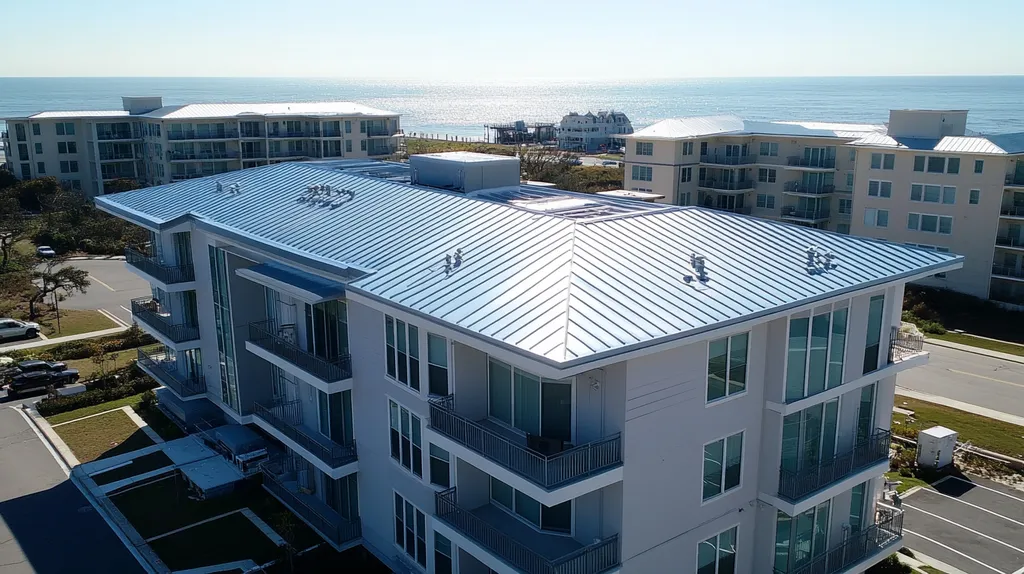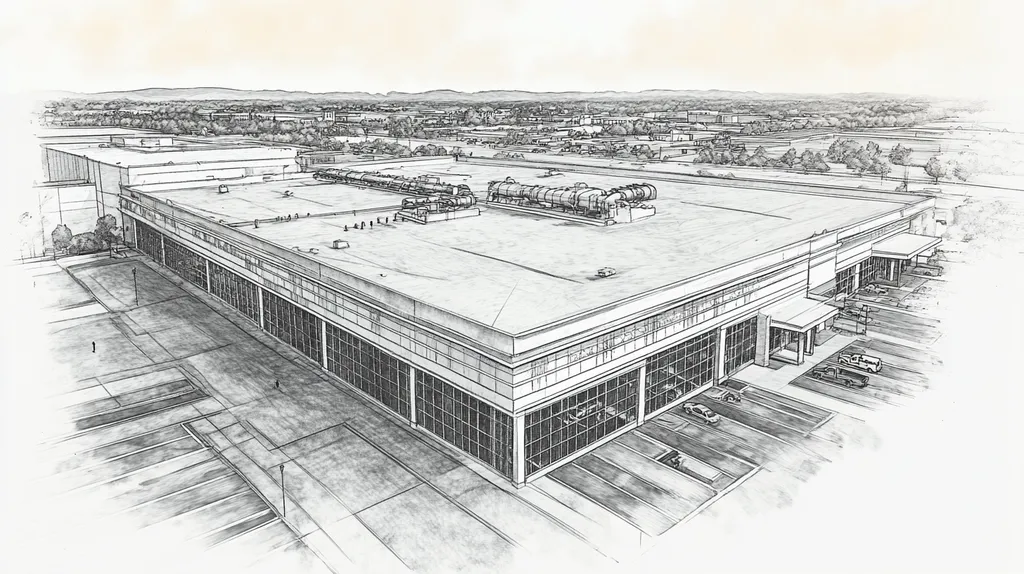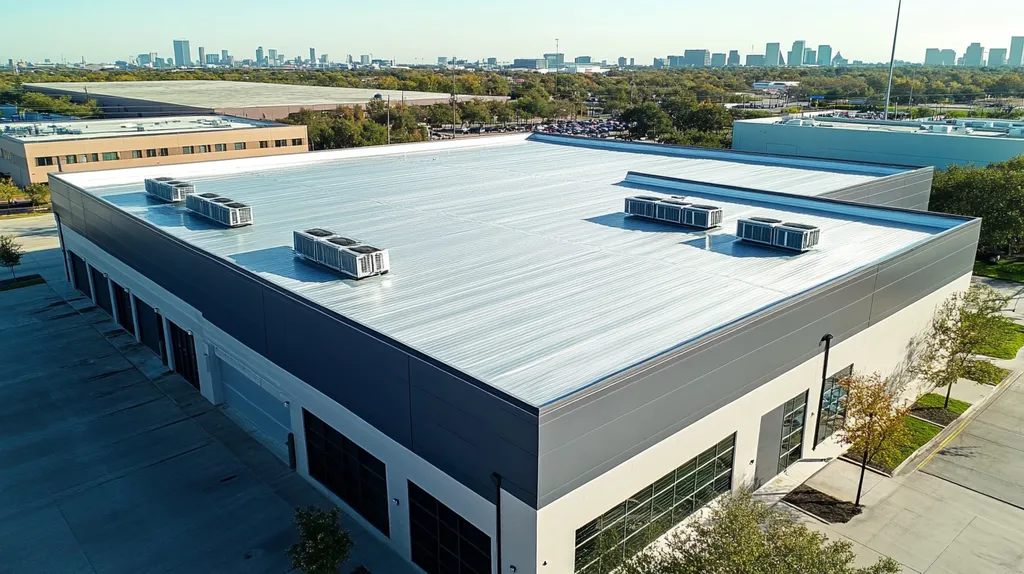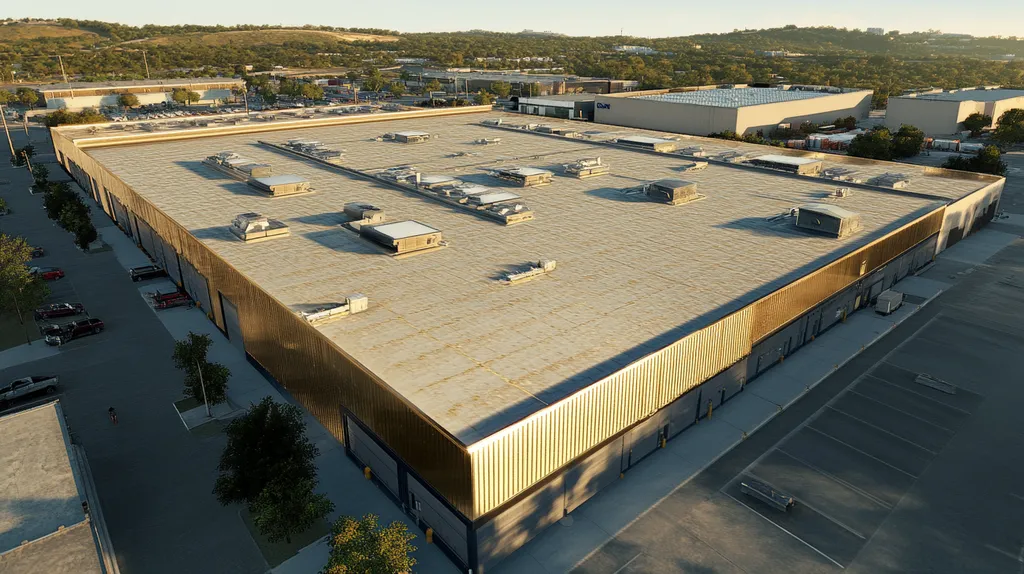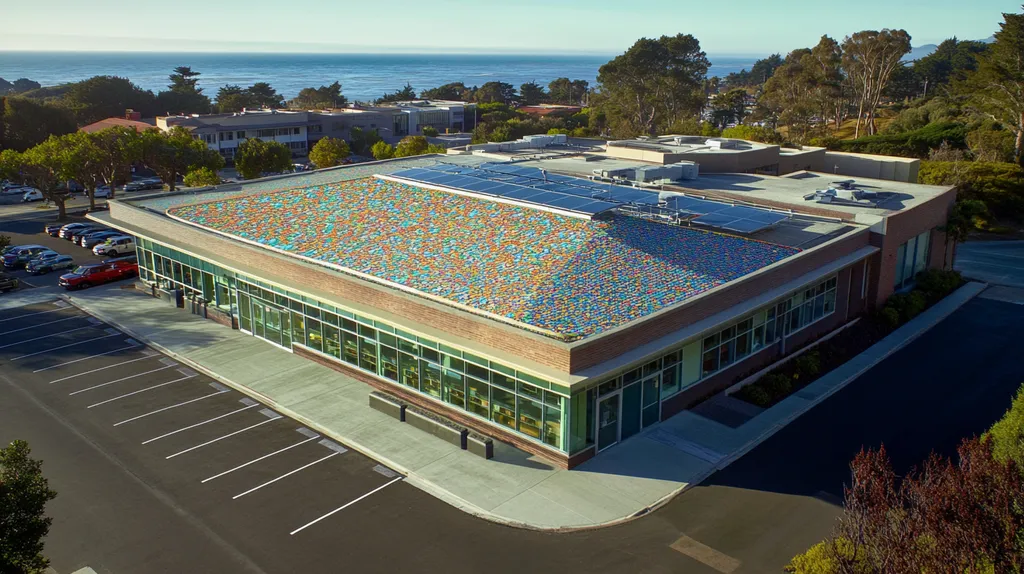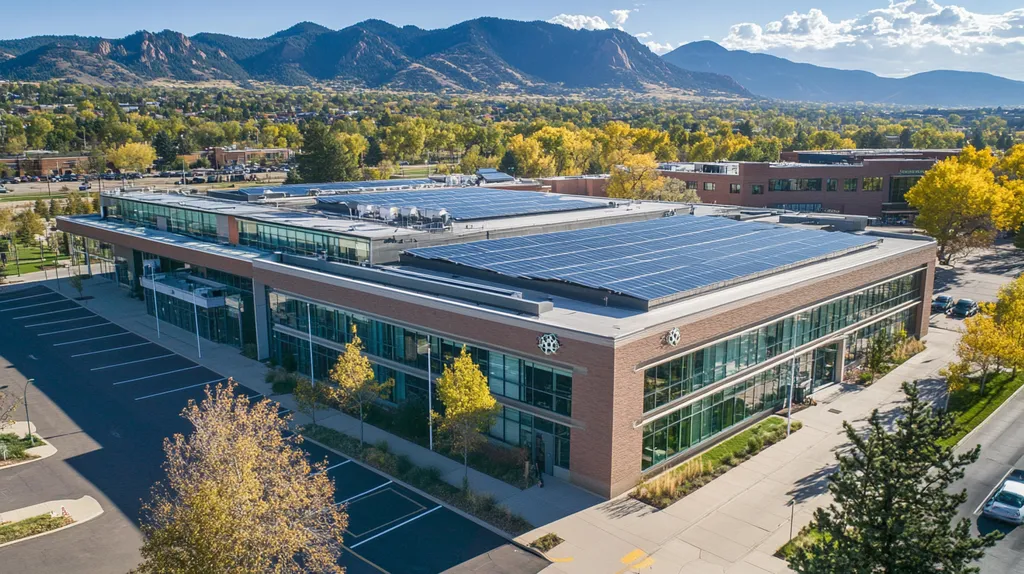Three out of five commercial property owners delay critical roof replacements due to financing misconceptions, risking structural damage and skyrocketing repair costs.
From traditional bank loans to innovative contractor programs, the landscape of commercial roofing finance has evolved dramatically – yet many decision-makers remain unaware of their options.
This comprehensive guide debunks common financing myths while exploring practical solutions that can help building owners protect their investments without breaking the bank.
SECTION 1: COMMON MISCONCEPTIONS
When it comes to commercial roof replacements, property owners often find themselves at a crossroads. The fear of high upfront costs can overshadow the need for essential upgrades. Additionally, there’s a prevalent notion that financing options are exclusively for large corporations, which can limit opportunities for smaller businesses. Misunderstanding the financing landscape can result in missed chances to enhance roofing systems affordably. By clarifying these misconceptions, property owners and facility managers can make informed choices that protect their investments.
Myth: High Upfront Costs Are Necessary
One of the most widespread myths in the roofing industry is that high upfront costs are unavoidable for commercial roof replacements. This misconception can discourage property owners from pursuing vital upgrades, worried about how it will impact their budgets. Fortunately, innovation in materials and flexible financing options has made it possible to complete roof replacements without breaking the bank.
For instance, many roofing companies provide flexible payment plans, enabling property owners to spread costs over time. This approach not only supports better cash flow management but also protects the building’s overall integrity. Plus, energy-efficient roofing systems can significantly reduce utility bills, providing long-term savings to help mitigate initial investments.
By understanding that high upfront costs are not set in stone, property owners can confidently explore budget-friendly alternatives. Consulting with knowledgeable roofing professionals can lead to customized solutions that fit specific financial needs. This shift toward embracing innovative financing structures empowers decision-makers to prioritize improvements rather than dread expenses.
Misconception: Financing Is Only for Large Corporations
Another common misconception is that financing options are only for large corporations, leaving small and mid-sized businesses feeling excluded. This limited perspective can hinder smaller enterprises from accessing critical resources for roof replacements. In truth, a variety of financing solutions are available for commercial properties of all sizes, meaning that smaller businesses can also effectively safeguard their investments.
Numerous local banks and financing institutions offer specialized programs aimed at commercial property owners, regardless of their size. These tailored financing options often come with competitive rates that can be quite appealing to smaller businesses. Additionally, many roofing contractors collaborate with financing companies to provide in-house financing, simplifying the process for property owners and cutting down on lengthy applications.
Understanding that financing isn’t just for the big players enables small business owners to tap into essential resources for their roofing needs. This knowledge is crucial, as roofs represent a substantial part of a building’s asset value and demand timely maintenance to avoid costly repairs. Allowing access to financing solutions for businesses of every size ultimately strengthens the commercial real estate market.
Belief: All Financing Options Are Similar
Many property owners mistakenly believe that all financing options for roof replacements are the same. However, this oversimplification can lead to unwise decisions, as variations in terms, interest rates, and repayment periods can significantly affect project budgets and feasibility. It’s essential to grasp the distinctions among financing options to make choices that align with specific needs.
Simplified loans may seem attractive with lower initial rates, yet they can come with hidden fees that accumulate over time, making them less favorable. On the other hand, some financing options provide longer repayment terms with predictable payments, making it easier for property owners to manage their cash flow.
Additionally, certain financing packages may offer benefits beyond financial support, such as warranties or maintenance plans that extend the roof’s lifespan. By delving into the various terms and advantages linked to each option, property owners can pinpoint financial arrangements that resonate with their goals.
Failing to understand the nuances of financing options can jeopardize not only a company’s financial health but also lead to inadequate roofing solutions that could compromise building safety and longevity.
SECTION 2: PRACTICAL IMPLICATIONS
For property owners, grasping the real-world consequences of financing options for commercial roof replacements is vital. Poor choices can create unexpected cash flow issues, disrupt daily operations, and even lead to the decline of property value. Alarmingly, a recent study shows that 60% of property owners delay essential roof repairs due to budget constraints. This section delves into how financing affects cash flow, influences business operations, and impacts long-term property value.
Impact on Cash Flow and Budgeting
The type of financing chosen for a roof replacement can dramatically affect a company’s cash flow. Property owners must juggle immediate costs against long-term financial health. For example, progressive financing allows payments to be spread over time, smoothing out monthly cash flow issues.
In contrast, opting for lump-sum payments can strain budgets, sucking up operating capital that might be needed elsewhere. Many businesses find themselves caught off guard when faced with an unexpected full roof replacement without a financial safety net. This pinch can lead to cutting corners in other critical areas of the business.
It is crucial for property owners to carefully assess their budgets and choose financing methods that align with their financial realities. By comprehensively understanding their options, they can dodge potentially crippling cash flow problems.
Moreover, financing alternatives come with varying interest rates and terms. A thorough evaluation of these factors aids in responsible budgeting, minimizing the risk of surprise financial burdens down the line.
Effects on Business Operations and Tenants
Financing choices can significantly influence day-to-day business activities and tenant satisfaction. If roof replacements lack proper financial backing, it may lead to project delays. Such delays can disrupt business operations and tenant activities, resulting in financial losses.
Tenants may become frustrated if leaks or issues persist due to financial limitations, leading to lower rental rates or higher turnover, which harms the property’s revenue stream.
In many cases, a commercial roof’s condition directly impacts tenant relationships and business operations. Financing that facilitates timely repairs and upgrades ensures smoother operations and helps maintain tenant confidence.
Additionally, consistent maintenance financed through appropriate options can prevent larger costs in the future, improving tenant retention and satisfaction. By prioritizing effective financing strategies, property owners can see it as an investment in their business’s reputation.
Influence on Property Value and Maintenance
The roof’s condition is a crucial factor in determining a property’s overall value. Deteriorating roofs can contribute to structural issues, ultimately leading to significant property devaluation. Financing options empower property owners to perform necessary upgrades, safeguarding long-term value.
A new roof can be a strong selling point for potential buyers. Flexible financing arrangements provide property owners the means to maintain, repair, and upgrade their roofs, making the property more appealing during evaluations.
A well-managed roof reduces the likelihood of costly, disruptive repairs later on. Establishing a solid financial plan ensures regular upkeep, fostering a positive perception of the property among potential tenants and investors.
Ultimately, property owners must recognize that their financing decisions not only affect immediate costs but also play a significant role in their future asset performance and value in a competitive market.
SECTION 3: COST OF MISINFORMATION
Misinformation surrounding commercial roofing can have serious financial repercussions. When property owners underestimate the urgency of roof repairs, they may inadvertently pave the way for extensive damage and soaring repair costs. Industry data shows that delaying necessary roof maintenance can increase overall expenses by up to 30%, as minor issues escalate into major problems. Recognizing the impacts of delayed repairs, missed energy efficiency opportunities, and potential legal chaos is essential for smart property management.
Delayed Repairs and Increased Damage
When misconceptions about roofing lifespan lead to delayed repairs, the integrity of the entire building can be at risk. Many property owners mistakenly believe that small leaks are harmless, only to discover later that these minor inconveniences can ignite severe structural damage. Water intrusion weakens roofing materials, threatens insulation, and ultimately leads to costly interior repairs.
A seemingly insignificant leak, if left unattended, can grow and foster mold, prompting expensive remediation. Additionally, deteriorating roofs can invite pests and wildlife into the building, which only exacerbates the situation. Engaging in regular roof inspections and maintenance can help identify these emerging issues before they snowball, saving property owners from financial headaches down the line.
Prioritizing timely assessments and professional evaluations on the state of the roof is key. By investing in proactive maintenance, property owners can avoid substantial costs resulting from emergency repairs and prevent potential property damage.
Missed Energy Efficiency Opportunities
Misinformation can also cause property owners to overlook the incredible energy efficiency benefits available through the right roofing solutions. A roof that’s not properly maintained or made with outdated materials can severely impact energy consumption, causing heating and cooling expenses to skyrocket. Inadequate roofing systems can result in energy losses of up to 30%!
Consider roofs that incorporate reflective materials—these can significantly cut cooling costs by minimizing heat absorption during scorching summer months. By dismissing modern energy-efficient roofing solutions, property owners miss out on opportunities for substantial financial savings and may even see their property values diminish.
Additionally, many utility companies provide incentives for energy-efficient roofing upgrades, yet these offers are often ignored due to the misconception that roofing choices are merely aesthetic. Recognizing the comprehensive scope of energy-saving options enables property owners to make more informed, financially savvy decisions.
Potential Legal and Safety Issues
Neglecting roofing responsibilities due to misinformation can lead to frustrating legal challenges. Commercial property owners are mandated to keep roofs safe and sound; failing to promptly address problems could result in liability claims. Injuries from neglected leaks or hazardous conditions can lead to lawsuits, incurring high legal fees and settlements.
Furthermore, older or substandard roofing systems may not meet local building codes, exposing property owners to fines or required repairs. Staying informed about local regulations is imperative to prevent unwelcome expenses and protect long-term investments.
Moreover, when roof issues compromise structural safety, it may create unsafe working conditions for maintenance personnel. Adopting clear safety strategies and engaging qualified professionals for regular inspections can help property owners avoid these pitfalls. Tackling legal and safety concerns is not only about adhering to regulations; it is an essential approach to protect finances and safeguard the well-being of everyone involved.
SECTION 4: REALITY CHECK
Navigating the financial landscape for commercial roof replacements is no small feat. With nearly 60% of building owners hesitating to invest due to uncertainty around financing options, it’s crucial to understand what’s really available. This knowledge can directly impact a property’s longevity and operational efficiency. In this section, we’ll dive into the actual financing options out there, assess credit requirements, and uncover government incentives that can ease the financial load for property owners.
Understanding Actual Financing Options
Commercial property owners have a variety of financing options at their disposal for roof replacements. Traditional loans are among the most prevalent, but they often come with hefty down payments and can involve lengthy approval processes. In contrast, lease financing enables owners to pay for their roofs over time, freeing up cash flow for other operational needs.
There are also specialized institutions dedicated to financing commercial improvements. These lenders often provide more favorable terms and quicker approvals, tailored for projects like energy-efficient roofing solutions. For example, a property manager might secure a low-interest loan specifically designed to support such upgrades.
Additionally, manufacturers may offer financing options directly to property owners. This partnership can streamline the financing process and make it more accessible, allowing for simpler transactions without unnecessary red tape.
When property owners grasp these various options, they can make informed decisions that match their financial circumstances, easing the burden of immediate out-of-pocket expenses.
Evaluating Credit Requirements and Terms
The credit requirements set by lenders significantly influence financing options available for commercial roofing projects. While many commercial lenders typically seek a credit score of at least 680, certain lenders might offer flexibility based on the scope of the project and property value. Knowing these criteria enables property managers to gather necessary documentation beforehand.
Loan terms can also vary widely and are crucial to consider. Shorter loan terms may lead to higher monthly payments but result in lower overall interest costs. On the flip side, longer-term loans can reduce monthly expenditures while increasing the total interest paid over time.
Property owners should take the time to compare interest rates across different lenders. This can sometimes reveal opportunities for better lending conditions and potential savings that significantly impact the project’s overall cost.
By diligently evaluating credit requirements and terms, property owners can select financing options that align closely with their budget and operational goals, paving the way for a hassle-free roofing replacement experience.
Recognizing Government Incentives and Grants
Government incentives and grant programs present a tremendous opportunity to lighten the financial load of commercial roof replacements. Programs such as the Energy-Efficient Commercial Buildings Tax Deduction provide enticing tax benefits for projects that meet specific energy-saving criteria, making substantial cost reductions possible.
Additionally, many local and state governments have funds earmarked to support building improvements, particularly those focused on energy efficiency. Since these programs vary widely by region, property owners must thoroughly research local options to maximize benefits.
Furthermore, non-profit organizations may offer grants for green building initiatives. Qualifying projects could receive financial support, substantially reducing out-of-pocket costs, and promoting sustainable practices.
By actively seeking and applying for these incentives, property owners not only enhance their financing options but also contribute to the long-term value of their buildings and lower operational costs in the future.
SECTION 5: EVIDENCE-BASED ALTERNATIVES
When it comes to financing a commercial roof replacement, the stakes couldn’t be higher. With roof repairs potentially consuming a substantial part of a building’s maintenance budget, it’s essential for property owners to explore every financing avenue available. By familiarizing themselves with the options at hand, owners can make informed financial decisions that contribute to both effective roofing management and long-term profitability. This section dives into bank loans and lines of credit, roofing company financing programs, and enticing government grants and incentives.
Bank Loans and Lines of Credit
Bank loans and lines of credit stand out as traditional yet powerful financing options for commercial roof replacements. They provide the upfront capital necessary for significant projects, complete with predictable repayment schedules. While interest rates may fluctuate based on creditworthiness and prevailing market conditions, they frequently present lower rates compared to unconventional funding solutions.
To find the best financing terms, property owners should compare offerings from various banks and financial institutions. A well-structured loan can help balance costs while maintaining steady cash flow. Additionally, lines of credit offer valuable flexibility by allowing property owners to borrow funds as needed—especially useful for those surprise repairs or extra roofing expenses that pop up.
However, it is vital for property owners to critically evaluate their financial status. Ensuring the ability to meet repayment obligations without straining the budget is crucial. Lenders often require comprehensive business plans and financial statements, making thorough preparation essential.
In summary, while bank loans and lines of credit can effectively finance new roofs, smart planning and evaluation are key to achieving success.
Roofing Company Financing Programs
Many roofing companies offer in-house financing programs uniquely crafted to meet their clients’ needs. These options simplify the financing process, reducing paperwork while often providing competitive rates. For property owners eager for a swift turnaround, these programs can minimize installation delays and accelerate project timelines.
Roofing contractors are well-versed in the specific challenges that commercial property owners face and can present tailored solutions. Some may also provide promotional financing options, such as zero-interest payment plans for a limited duration, which can ease the financial load during the project.
Despite these benefits, property owners should remain vigilant when reviewing any financing agreements. Hidden fees and unfavorable repayment terms can negate the advantages. It’s essential to scrutinize the fine print and ask pertinent questions to fully understand the total costs of financing.
Overall, roofing company financing programs offer a practical alternative, but due diligence is crucial to ensure optimal outcomes.
Government Grants and Incentives
Government grants and incentives can significantly ease the financial burden of commercial roof replacements, making them highly appealing for property owners. Numerous federal and state programs may provide tax credits, rebates, or subsidies aimed at promoting sustainable building practices, particularly for energy-efficient roofing solutions.
For example, many municipalities have adopted green building initiatives encouraging investments in energy-efficient systems. Participating in such programs can lead to reduced initial costs and lower utility expenses in the long run. Property owners should investigate available incentives in their region and consult local government agencies for insights on eligibility and application processes.
Navigating these programs can be daunting, as guidelines and funding availability differ widely. Staying informed about changes in policies and funding could significantly impact project feasibility. Collaborating with roofing contractors knowledgeable about these incentives can simplify the application process and deliver valuable insights.
In conclusion, leveraging government grants and incentives can profoundly affect the financial viability of a roof replacement project. A proactive approach to exploring these options can yield significant savings and promote a sustainable building future.
SECTION 6: TEST AND VERIFY
When it comes to financing options for commercial roof replacements, making informed decisions is critical. Property owners risk significant operational losses from leaks or damage if roofing failures occur. Did you know that untreated roofing issues can escalate operational costs by an alarming 25%? Therefore, assessing loan interest rates, verifying contractor financing plans, and reviewing real-life case studies are essential steps in navigating this financial landscape.
Assessing Loan Interest Rates and Terms
Understanding loan interest rates and terms is crucial for all property owners, as even a slight difference in rates can dramatically affect overall project costs. For instance, consider a scenario where a property owner encounters a 5% interest rate versus a 7% rate; the cost difference can add up to thousands over the life of the loan.
It’s vital to shop around and compare offerings from multiple lenders. Some loans may look appealing at first glance but could include hidden fees that inflate overall costs, turning what seemed like a good deal into a potential financial burden.
Opt for loans with fixed rates for predictability in monthly payments, which can help streamline budgeting. Also, evaluating flexible terms is important, as they can significantly impact cash flow and the speed at which a business can recover its investment.
Early evaluation of these factors can safeguard property owners from costly financing pitfalls and empower them to make well-informed choices.
Verifying Contractor Financing Plans
Contractor financing plans can vary widely, making verification paramount. While many contractors offer financing, their terms can differ significantly from those of traditional lenders, so asking for a complete breakdown of costs, fees, and interest rates is essential.
Some contractors may provide attractive promotional rates or offer financing options with hefty down payments. Property owners should read the fine print diligently to fully understand what they are signing, avoiding any surprises down the line.
Open communication with the contractor can uncover additional financing avenues. Many contractors collaborate with financing firms, providing specialized solutions tailored to meet client needs.
Taking the time to verify these plans not only empowers property owners with clarity but also ensures their financing decision aligns with their long-term financial strategy.
Reviewing Case Studies and Success Stories
Exploring relevant case studies can offer insightful perspectives on successful financing options. By analyzing projects similar to their own, property owners can uncover effective strategies as well as potential pitfalls. For example, a warehouse owner may find a case study illustrating how timely financing improved cash flow and overall operational efficiency.
Success stories often highlight the importance of thorough research and verification in achieving positive outcomes. Many organizations have documented their journeys through successful financing, showcasing how these steps led to increased property value and sustainability.
Engaging with industry associations or networking groups can further broaden access to such valuable information. Peer insight can reveal financing paths that might not be immediately apparent, providing inspiration for innovative solutions.
Ultimately, leveraging these real-life examples ensures property owners make decisions rooted in proven outcomes rather than speculation, fostering confidence in their financial strategies.
The Bottom Line
With 60% of commercial property owners delaying critical roof replacements due to financing misconceptions, the cost of inaction continues to mount across the industry.
From bank loans and contractor programs to government incentives, today’s financing landscape offers more flexibility than ever before – yet these options remain underutilized due to persistent myths.
Property owners who take time to explore and verify their financing choices often discover paths to complete necessary upgrades while preserving cash flow.
The real cost isn’t in financing a new roof – it’s in postponing action until emergency repairs become inevitable, leading to business disruption and skyrocketing expenses.
By debunking common financing myths and embracing evidence-based alternatives, commercial property owners can protect their investments while maintaining healthy bottom lines.
FREQUENTLY ASKED QUESTIONS
Q. Is it true that high upfront costs are necessary for a commercial roof?
A. Not necessarily! Innovative materials and flexible financing options can help you manage costs. By collaborating with roofing professionals, you can find budget-friendly solutions that protect your investment without overwhelming your budget.
Q. How does financing affect cash flow for a commercial roof?
A. The type of financing chosen can significantly impact your cash flow. Options like progressive financing allow payments over time, easing monthly budget strains and helping maintain operational capital where you need it most.
Q. Can misinformation really inflate costs related to commercial roofing?
A. Yes, misconceptions about roofing maintenance can lead to delays that escalate costs. For instance, neglecting small leaks can result in significant structural damage, ultimately costing you 30% more than if repairs were made on time.
Q. What financing options are available for a commercial roof replacement?
A. Property owners can choose from traditional loans, lease financing, and specialized lenders. Additionally, manufacturers often offer financing plans that simplify transactions, helping you make informed choices that align with your budget.
Q. Are there government incentives for commercial roofing upgrades?
A. Yes! Programs like the Energy-Efficient Commercial Buildings Tax Deduction offer significant tax benefits for energy-efficient upgrades. Local incentives may also provide valuable financial support, making it vital to research your options.
Q. How can I verify contractor financing plans for my roof?
A. It’s essential to ask for a detailed breakdown of costs, fees, and interest rates. Open dialogue with contractors can lead to discovering tailored financing solutions that meet your needs without hidden surprises.
Q. What should I consider when choosing bank loans for a commercial roof?
A. Compare interest rates and terms from different lenders. A well-structured loan can offer lower rates and assist in maintaining steady cash flow, while a comprehensive understanding of your financials is vital for making informed choices.

